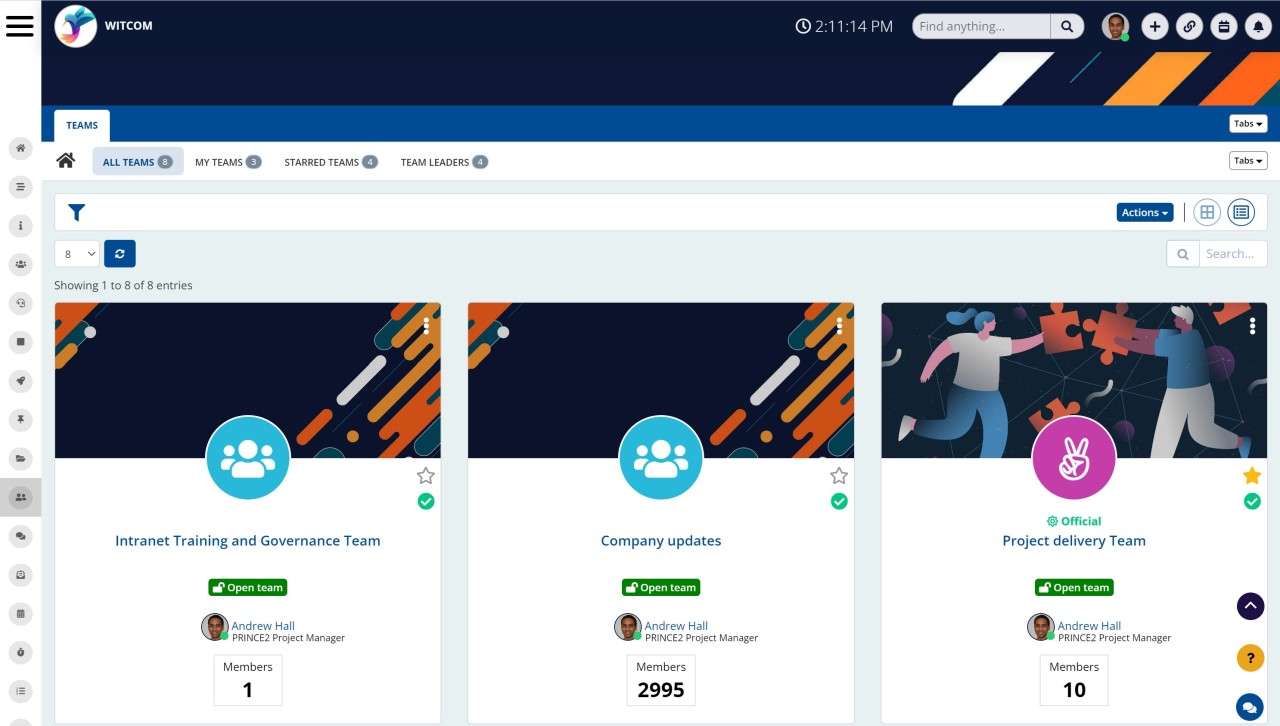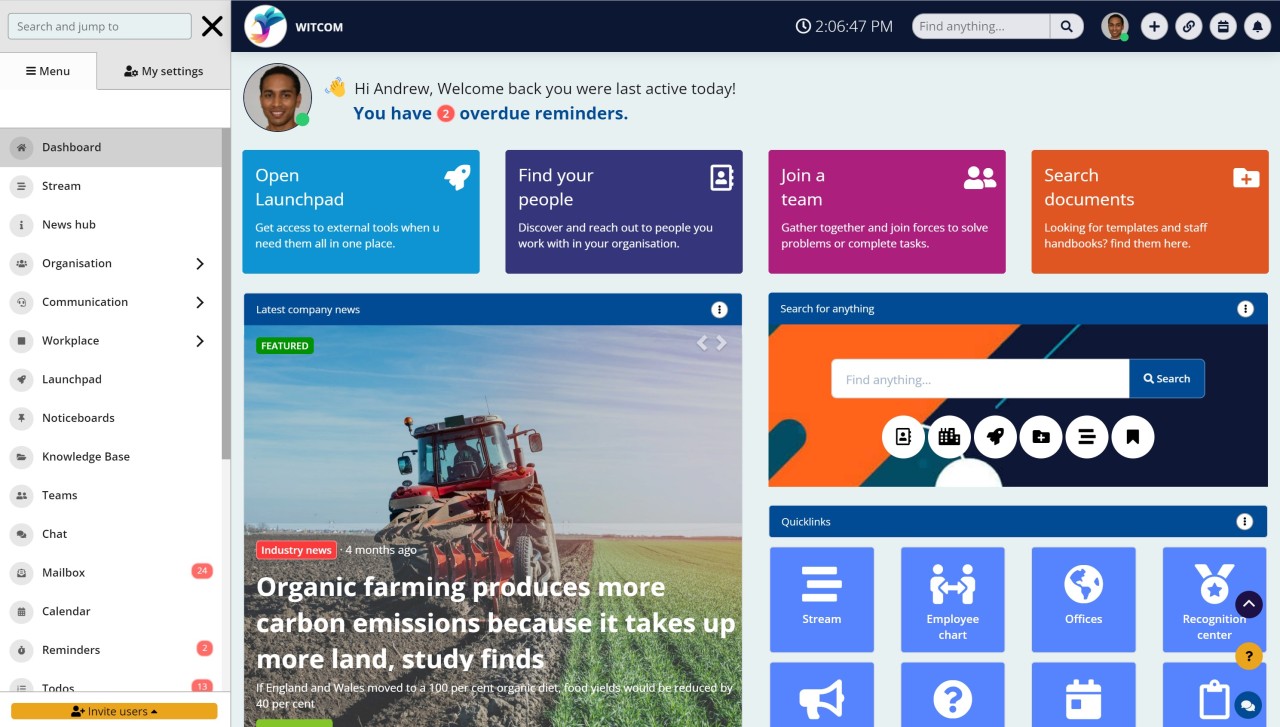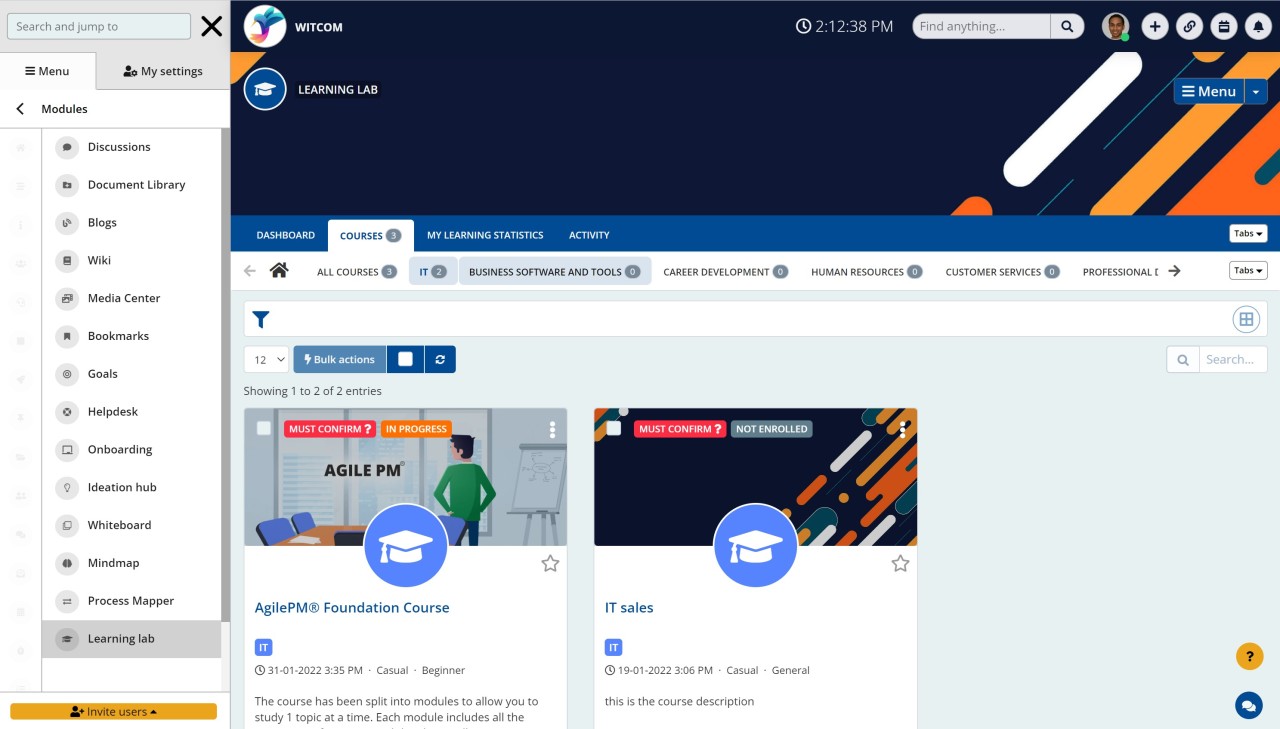Insight Blog
Agility’s perspectives on transforming the employee's experience throughout remote transformation using connected enterprise tools.
10 minutes reading time
(1978 words)
How to Improve Knowledge Sharing and Collaboration in Your Company
An essential step to facilitate knowledge sharing in organizations is to create a culture and workspace where sharing is encouraged.
When it comes to strategies for managing a company's information, organizations often struggle due to either an overabundance of unorganized data or a lack of knowledge sharing. In situations where employees are unable to access the information they need to do their jobs well, a company's profitability can suffer.
Knowledge hoarding is a problem that can arise when an individual possesses information that could be beneficial to their colleagues, but they choose not to share it or make it difficult to access. While this behavior may seem malicious, it is often unintentional. Due to the demands of their core responsibilities, employees may not have the time to document or share their knowledge with others. Unfortunately, this can have a significant impact on an organization's growth and productivity, particularly when those employees leave the company.
Knowledge hoarding creates mistrust within teams, obstructs collaboration between departments or remote teams, and costs companies valuable time and money. Furthermore, it can impede employee innovation and agility, reducing a company's competitive edge.
Conversely, implementing a culture of constant knowledge sharing can bring endless benefits to an organization. A well-designed knowledge-sharing system fosters collaboration, encourages creative problem-solving, minimizes knowledge loss when employees leave, and ensures that every department has easy access to information when they need it, speeding up response times and improving customer experience.
Knowledge hoarding is a problem that can arise when an individual possesses information that could be beneficial to their colleagues, but they choose not to share it or make it difficult to access. While this behavior may seem malicious, it is often unintentional. Due to the demands of their core responsibilities, employees may not have the time to document or share their knowledge with others. Unfortunately, this can have a significant impact on an organization's growth and productivity, particularly when those employees leave the company.
Knowledge hoarding creates mistrust within teams, obstructs collaboration between departments or remote teams, and costs companies valuable time and money. Furthermore, it can impede employee innovation and agility, reducing a company's competitive edge.
Conversely, implementing a culture of constant knowledge sharing can bring endless benefits to an organization. A well-designed knowledge-sharing system fosters collaboration, encourages creative problem-solving, minimizes knowledge loss when employees leave, and ensures that every department has easy access to information when they need it, speeding up response times and improving customer experience.
To improve knowledge sharing within an organization, several key elements are necessary: a purpose-built knowledge base or similar platform, a company culture that prioritizes knowledge sharing, and specific best practices for making information accessible and convenient. Below, we examine some of the tools and tips for effective knowledge sharing that can benefit any organization's processes.
So let's look at and analyze the practical steps companies can take to improve collaboration between members of their teams in particular and between different teams in general. We will also look at the possibilities of knowledge sharing.
To facilitate collaboration and knowledge sharing, companies need to provide their teams with technologies and the right tools. There is a wide range of collaboration tools available. They can help teams work much more efficiently.
Among others, instant messaging apps, project management tools, document sharing platforms, and video conferencing software are worth considering. Companies should not only invest in such tools, but also make ensure that their teams are well-trained to use them properly.
Among other things, issues such as how to free up your hard drive space and other situations that arise during intense working hours can be easily resolved and solved.
This is because the knowledge and experience provided by the company will come to the aid.
Investing in technology and collaboration tools is essential for modern businesses to stay competitive and thrive in today's digital landscape.
Here are five ways to invest in these tools:
- Cloud-based Software: Cloud-based software like an enterprise intranet is a great investment for businesses looking to improve collaboration and productivity. These tools provide employees with easy access to files and applications from anywhere, at any time, making it easier to work together and collaborate on projects.
- Video Conferencing: Video conferencing is becoming increasingly popular in the modern workplace, especially with remote workers. Investing in video conferencing tools can help businesses save time and money by reducing the need for travel and in-person meetings.
- Project Management Tools: Project management tools are essential for businesses that need to manage multiple projects and teams. These tools help keep everyone on the same page by providing a centralized platform for task management, communication, and progress tracking.
- Collaboration Platforms: Collaboration platforms, such as Microsoft Teams or Slack, allow teams to communicate and collaborate seamlessly. These platforms provide a range of features, such as file sharing, instant messaging, and video conferencing, making it easier for teams to work together regardless of their location.
- Cybersecurity: Investing in cybersecurity is crucial for businesses that use technology and collaboration tools. With the increase in cyber threats, businesses need to take proactive measures to protect their data and systems from potential breaches. Investing in cybersecurity tools and services can help protect your business and its assets from cyber attacks.
By investing in technology and collaboration tools, businesses can improve productivity, streamline communication, and stay ahead of the competition. Whether it's cloud-based software, video conferencing, project management tools, collaboration platforms, or cybersecurity, there are plenty of ways for businesses to invest in technology and collaboration tools to achieve their goals
Develop a Culture of Knowledge Sharing
It is important to understand that creating such a culture starts at the top. First of all, leaders must recognize the importance of the knowledge exchange for improving productivity. This way, they will lead by their own examples. Leaders should encourage their teams to be open to feedback and suggestions.
They should also encourage their employees and subordinates to share their expertise freely and be willing to learn from each other without fear of being seen as ridiculous or less experienced.
A culture of knowledge exchange will succeed where leaders maintain a supportive environment and a comfortable internal atmosphere within the company.
Signs of this include people asking questions and sharing their thoughts and ideas without fear of being judged or criticized.
Developing a culture of knowledge sharing within a company is essential for growth and productivity.
Here are some ways a company can achieve this:
- Set the tone from the top: Leaders must model knowledge sharing behaviours and encourage employees to do the same. When executives prioritise knowledge sharing and demonstrate its value, it sets the stage for others to follow suit.
- Establish shared goals: When everyone within the company understands how knowledge sharing supports the overall goals of the organisation, it creates a shared sense of purpose. This can be achieved through company-wide communications and training programs.
- Foster a safe environment: Employees need to feel safe and supported to share their knowledge, ideas, and experiences without fear of judgement or repercussions. Creating a culture of psychological safety is critical for encouraging open communication and collaboration.
- Invest in knowledge sharing tools: Providing employees with technology and collaboration tools that make it easy to share information can help foster a culture of knowledge sharing. These tools should be easy to use, intuitive, and accessible to everyone in the organisation.
- Recognise and reward knowledge sharing: Celebrating and rewarding employees who contribute to the culture of knowledge sharing can encourage others to do the same. Recognition could take the form of public acknowledgement, promotions, or financial incentives.
By implementing these strategies, a company can develop a culture of knowledge sharing that benefits everyone within the organisation.
Provide Opportunities for Development
In a collaborative environment, training and development will help people develop themselves, their skills, knowledge and abilities. All of these are essential for effective teamwork. A must-have for companies is to organize and conduct various trainings on teamwork, conflict resolution, and healthy communication. Companies should also provide their teams with opportunities to attend various events, including seminars, conferences, etc.
This will greatly expand both general and individual knowledge, as well as help develop new skills in parallel.
At the same time, team spirit will be strengthened by attending such events together.
Encourage and Reward Cross-Functional Collaboration
Collaboration is bringing together people from different departments to solve a problem or work on a project. This way, the skills of people with different perspectives and experiences are utilized. Companies should encourage such collaboration.
This can be done by organizing brainstorming sessions, seminars, and team building events, which, as mentioned above, unites people from different teams.
Recognizing and rewarding collaboration is an effective way to encourage and reinforce team behavior. Companies should recognize individuals and teams that demonstrate knowledge sharing and collaboration.
They also need to be rewarded. This can be done both informally and formally.
In the first case, it can be public praise or gratitude. In the second case, it can be a prize or award.
If you want to create more opportunities for development within your company, there are several actions you can take:
- Encourage ongoing learning: Make sure your employees have access to training programs and resources, and encourage them to take advantage of these opportunities. Support them in their pursuit of new skills and knowledge.
- Provide growth opportunities: Offer opportunities for employees to take on new roles or responsibilities, and encourage them to set goals for their professional development. Recognize and reward those who take initiative and demonstrate a willingness to learn.
- Foster a culture of collaboration: Encourage teamwork and knowledge sharing across departments and teams. Create opportunities for employees to collaborate on projects or cross-functional teams, and recognize and reward those who demonstrate a commitment to working collaboratively.
- Provide regular feedback: Give your employees feedback on their performance and provide them with constructive criticism to help them improve. This will help them identify areas for improvement and take steps to develop their skills.
- Lead by example: As a leader in your company, model the behaviours you want to see in your employees. Demonstrate a commitment to ongoing learning and development, and encourage others to do the same.
By taking these steps, you can create a culture of learning and development within your company that will help you attract and retain top talent, and drive innovation and growth.
Read more
Track and Measure Progress
These steps are necessary to improve collaboration and knowledge sharing. Companies should establish metrics or use any other measurement tools that will help them monitor their collaboration and knowledge exchange processes. Such metrics could include the number of trainings attended, new ideas generated, or cross-functional projects completed. Thus, thanks to such tracking, companies will be able to identify areas that need to be changed and improved.
Having identified them, wise companies will try to make the necessary changes to their approaches and strategies.
Finally, improving knowledge exchange and collaboration is extremely important for companies that want to operate in an efficient and effective manner.
By investing in technology and collaboration tools, developing a culture of knowledge sharing, providing opportunities for development, encouraging and rewarding cross-functional collaboration, and tracking and measuring progress, companies will create an innovative, collaborative work environment and atmosphere that will benefit everyone involved and, ultimately, the company.
Tracking and measuring progress is crucial to ensure that the actions you take to create more opportunities for development in your company are effective.
Here are some steps you can take to track and measure progress:
- Set clear goals: Define specific, measurable, achievable, relevant, and time-bound (SMART) goals that align with your company's vision and mission. This will help you track progress and measure success.
- Define Key Performance Indicators (KPIs): Identify the KPIs that will help you measure progress towards your goals. For example, you could track employee satisfaction, employee retention rates, or the number of promotions and internal hires.
- Collect data: Collect data on the KPIs you have identified, using surveys, feedback sessions, and performance reviews.
- Analyse the data: Analyse the data to identify trends and patterns, and to understand where progress is being made and where there are areas for improvement.
- Adjust your strategies: Use the insights gained from your data analysis to adjust your strategies and refine your approach to creating more opportunities for development.
- Communicate progress: Keep your employees informed about progress towards your goals, and share insights gained from your data analysis with your team. This will help to build buy-in and support for your efforts to create more opportunities for development.
By following these steps, you can effectively track and measure progress towards creating more opportunities for development in your company, and make adjustments as needed to ensure success.
Categories
Blog
(2618)
Business Management
(320)
Employee Engagement
(210)
Digital Transformation
(174)
Growth
(119)
Intranets
(119)
Remote Work
(61)
Sales
(48)
Collaboration
(37)
Culture
(29)
Project management
(29)
Customer Experience
(26)
Knowledge Management
(21)
Leadership
(20)
Comparisons
(6)
News
(1)
Ready to learn more? 👍
One platform to optimize, manage and track all of your teams. Your new digital workplace is a click away. 🚀
Free for 14 days, no credit card required.
















